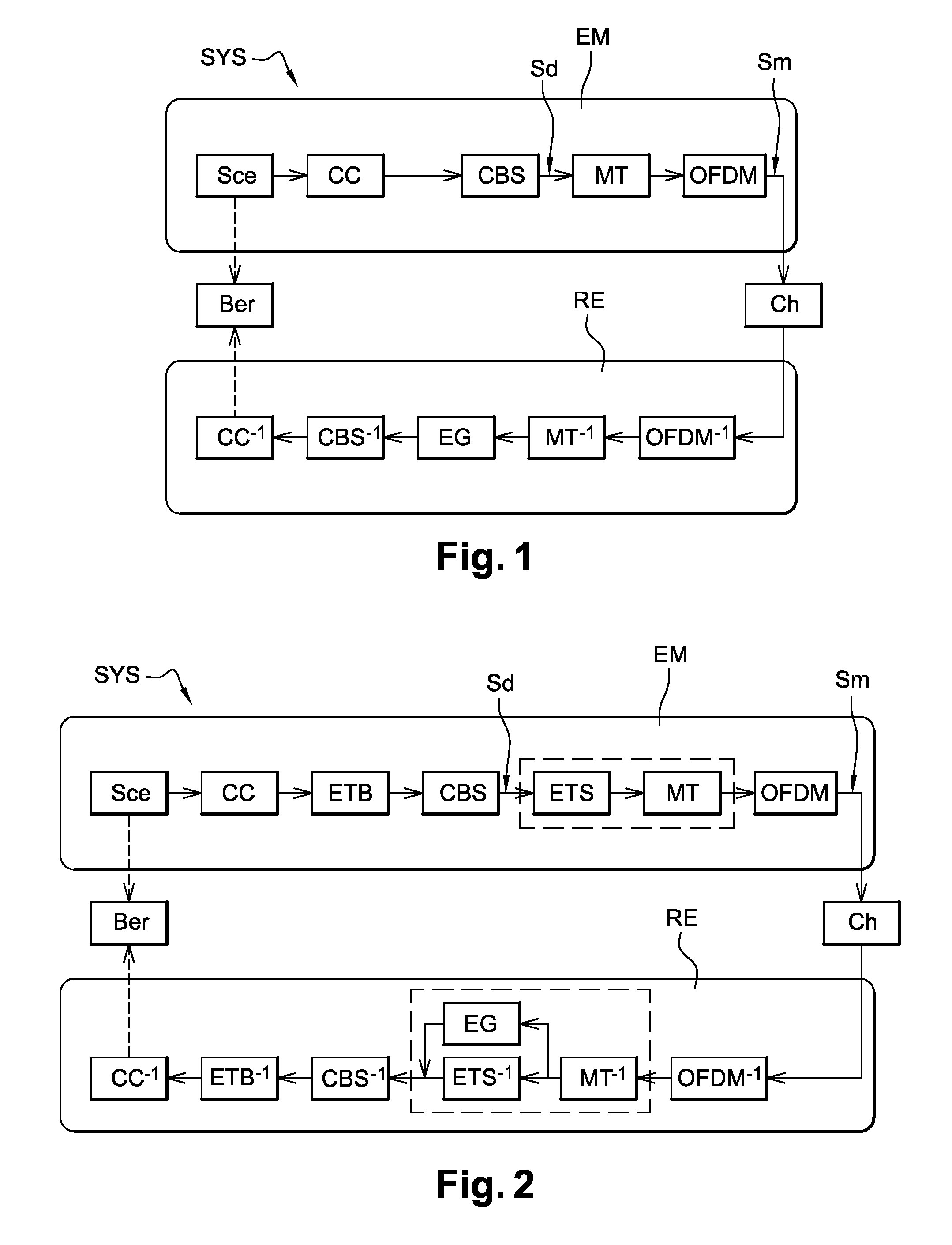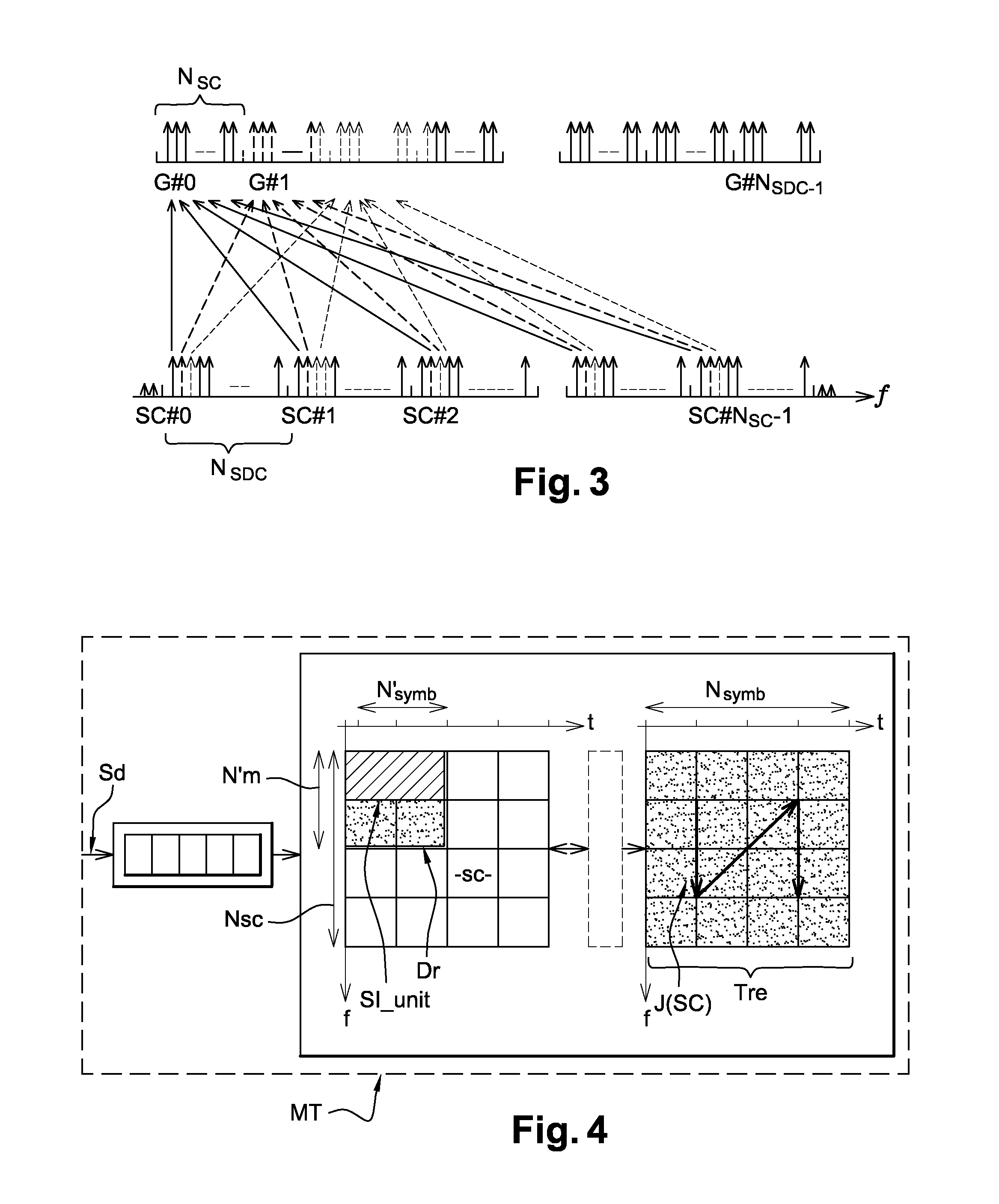Method and a device for transmission with time-frequency mapping of symbols in sub-channels
a time-frequency mapping and symbol technology, applied in the field of telecommunications, can solve the problems of limiting the performance of the decision circuit on reception, time correlation giving rise to error bursts, and the drawback of known symbol mapping techniques reducing or even eliminating the diversity effect associated, and achieve the effect of increasing the diversity
- Summary
- Abstract
- Description
- Claims
- Application Information
AI Technical Summary
Benefits of technology
Problems solved by technology
Method used
Image
Examples
Embodiment Construction
[0096]Other characteristics and advantages of the invention appear from the following description with reference to the accompanying figures given as non-limiting examples.
[0097]FIG. 1 shows a conventional transceiver system described in baseband for a prior art system SYS.
[0098]FIG. 2 shows a conventional transceiver system including interleaving ETB performed on the binary data and interleaving ETS performed on the data symbols Sd, described in baseband for a prior art system SYS.
[0099]FIG. 3 is a diagram of a prior art mapping technique consisting in scattering a different symbol from each group of users to each sub-channel and in distributing the sub-channels in time and in frequency in such a manner as to mix different users within a given OFDM symbol.
[0100]FIGS. 4, 5, 6, and 7 relate to a prior art system complying with the standard IEEE 802.16e.
[0101]FIG. 4 is a diagram of the mapping method.
[0102]FIG. 5 is a detail diagram of the mapping method for FUSC mode for the down pat...
PUM
 Login to View More
Login to View More Abstract
Description
Claims
Application Information
 Login to View More
Login to View More - R&D
- Intellectual Property
- Life Sciences
- Materials
- Tech Scout
- Unparalleled Data Quality
- Higher Quality Content
- 60% Fewer Hallucinations
Browse by: Latest US Patents, China's latest patents, Technical Efficacy Thesaurus, Application Domain, Technology Topic, Popular Technical Reports.
© 2025 PatSnap. All rights reserved.Legal|Privacy policy|Modern Slavery Act Transparency Statement|Sitemap|About US| Contact US: help@patsnap.com



